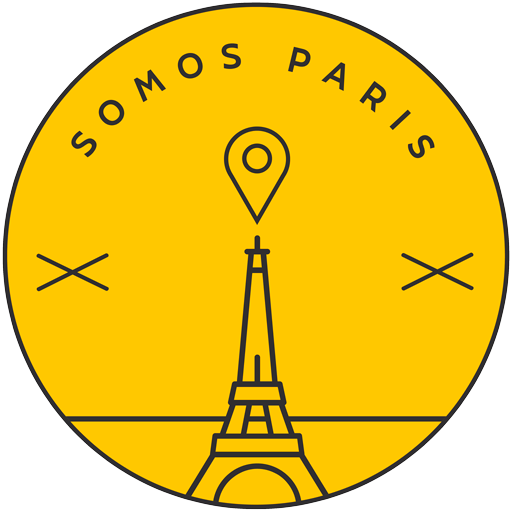The Arc de Triomphe is one of the most famous and symbolic national monuments in Paris. Its history is intertwined with Napoleon’s military victories, the legacy of the French Revolution, and the remembrance of the Armistice which put an end to World War I. Besides, you can’t miss out on the breathtaking panoramic views from its upper terrace.
Come with us to discover the history of the Arc de Triomphe and how to visit it in Paris!
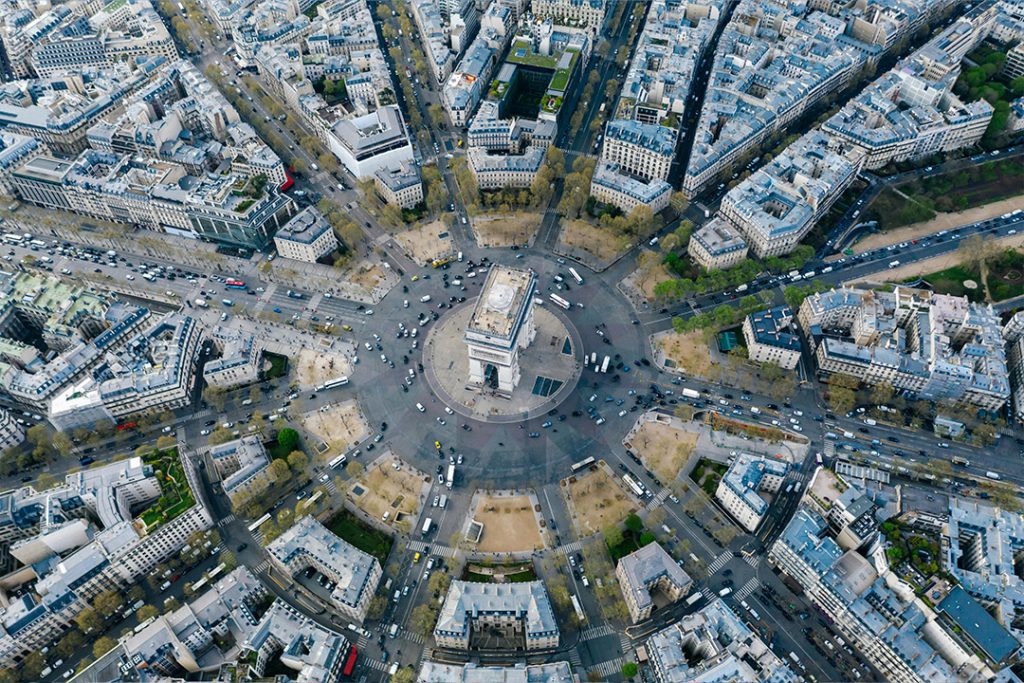
History of the Arc de Triomphe
The building of the Arc de Triomphe dates back from 1806 to 1836, and it was erected by command of Napoleon Bonaparte to commemorate his victory in the Battle of Austerlitz (1805) over the combined Russian-Austrian army of Tsar Alexander I and Franz Joseph I of Austria in the wider frame of the Napoleonic Wars.
Envisioned by Jean Chalgrin and Jean Arnaud Raymond, the Arc de Triomphe was inspired by Rome’s Arch of Titus, being fifty meters tall and forty-five meters wide.
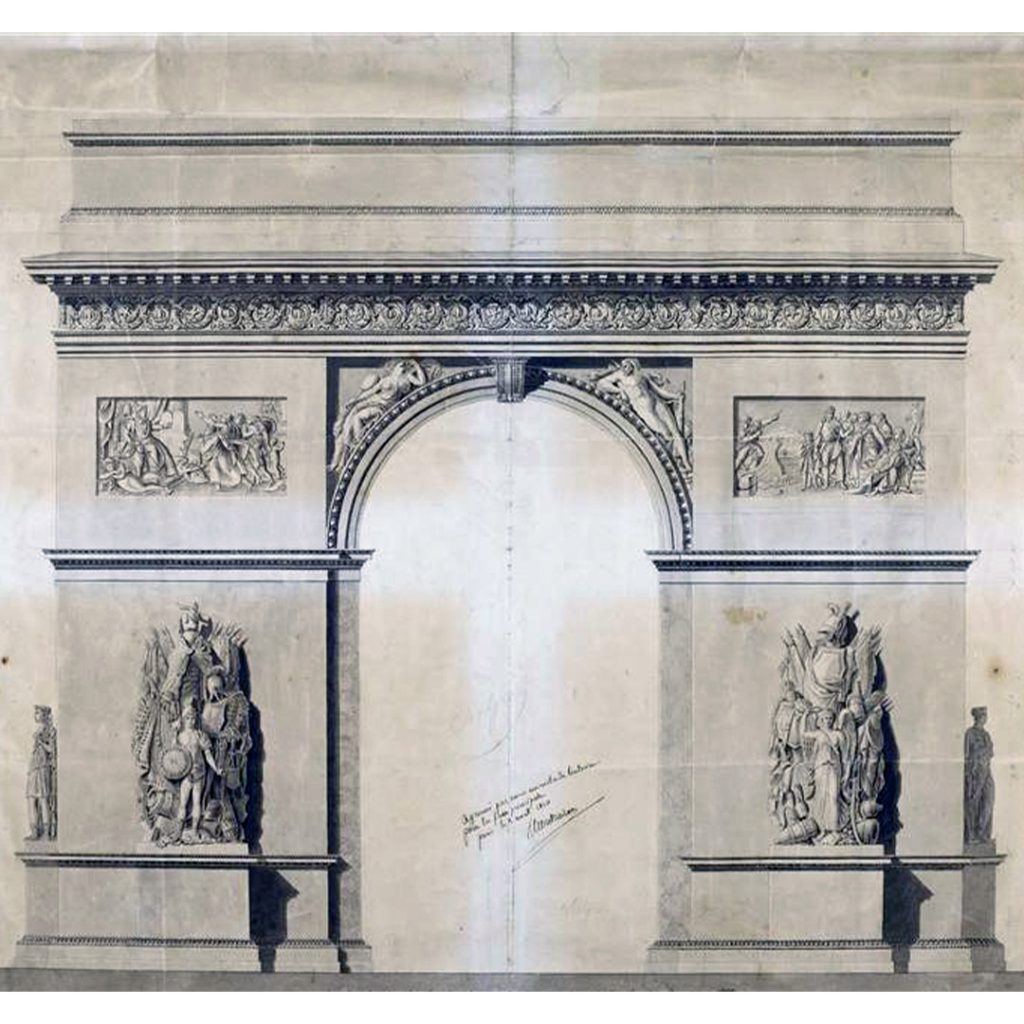
Origins and Building
Napoleon Bonaparte decided to begin the construction of the Arc du Triomphe in 1806, having promised his men during the victory at the Battle of Austerlitz that “they would come back home under triumphal arches”. Precisely because of this, Napoleon initially wanted the Arc to be built in the Place de la Bastille, in eastern Paris, where his army would arrive from the war, but it was finally resolved that it would be better placed in the westernmost end of the Champs Élysées, in the former Place de l’Étoile (French for Star Square), nowadays called Place Charles De Gaulle.
The project for the Arc de Triomphe was commissioned to architect Jean Chalgrin, and to Jean Arnaud Raymond, although it would be continued by Jean-Nicolas Huyot and Hericart de Thury following Chalgrin’s passing in 1811. By the time Napoleon returned to Paris alongside his new wife, Archduchess Marie Louise of Austria, the Arc was far from being finished, so a wooden replica was erected so that, as promised, the soldiers could march underneath triumphal arches, even if they were not made in stone.
Inauguration and Initial Reactions
The inauguration of the Arc de Triomphe took place already under the reign of Louis-Philippe, on July 29th, 1836, as the works cost a total of ten million francs (about sixty-five million current euros, over fifty-five million British pounds, or more than seventy million dollars). The monument would not only celebrate the Battle of Austerlitz at this point, but also every French military victory, as well as the French Revolution, and it served as a memorial for everyone who had lost their lives for the motherland.
As a matter of fact, Napoleon would only cross it during his own funeral march in 1840, when his remains, brought from the island of Saint Helena, paraded Paris to be laid in the graveyard of the Invalides.

Significance and Symbolism
The significance of the Arc de Triomphe is extensive, and it reaches far beyond being an emotional token for French military victories. At its foot, there lies the Tomb of the Unknown Soldier, honoring the lives which were tragically lost during World War I, and its companion, the eternal flame.
Nowadays, the Arc de Triomphe is, rather than a celebration of military feats, a historical walk throughout war over the last two hundred years with the aim of calling for a debate on the nature of conflict and peace.

The Tomb of the Unknown Soldier
The Tomb of the Unknown Soldier was installed at the foot of the Arc de Triomphe in 1920 (even though it was in the first-floor chapel during the first few months). Upon its surface, an inscription reads: “ICI REPOSE UN SOLDAT FRANÇAIS MORT POUR LA PATRIE, 1914-1918” (“here lies a French soldier who died for the motherland”).
Beside it, the eternal flame is fed every day by associations of veterans and war victims in order to keep the remembrance of the fallen alive, both during World War I and also in other conflicts.

Architecture and Design
The architecture of the Arc de Triomphe shows an elegant Neoclassical style designed by architect Jean Chalgrin. As mentioned before at the beginning of this article, the aforementioned author would pass away in 1811, and different architects would finish his work.
The Arc de Triomphe hosts a series of wonderful reliefs and sculptures which will be described in further detail in the following chapter!
Reliefs and Sculptures
The sculptures in the Arc de Triomphe, as well as its historical reliefs, are one of its main attractions. The four main sculpture ensembles, placed in the pillars of the monument, are “La Marseillaise”, “Le Triomphe de 1810”, “La Résistance de 1814”, and “La Paix de 1815”.
The four of them praise the victories and accomplishments achieved throughout the Napoleonic Wars. The most famous one is arguably “La Marseillaise”, which celebrates the advent of the First French Republic with the winged embodiment of Freedom.
The historical reliefs, located in the façades of the Arc, portray key events both of the French Revolution and also from the Napoleonic period, such as the Battle of Austerlitz or the Battle of Abukir.
Moreover, the monument features allegorical figures from Roman mythology, as well as the engraved names of military leaders from the Revolution and the Napoleonic Empire.
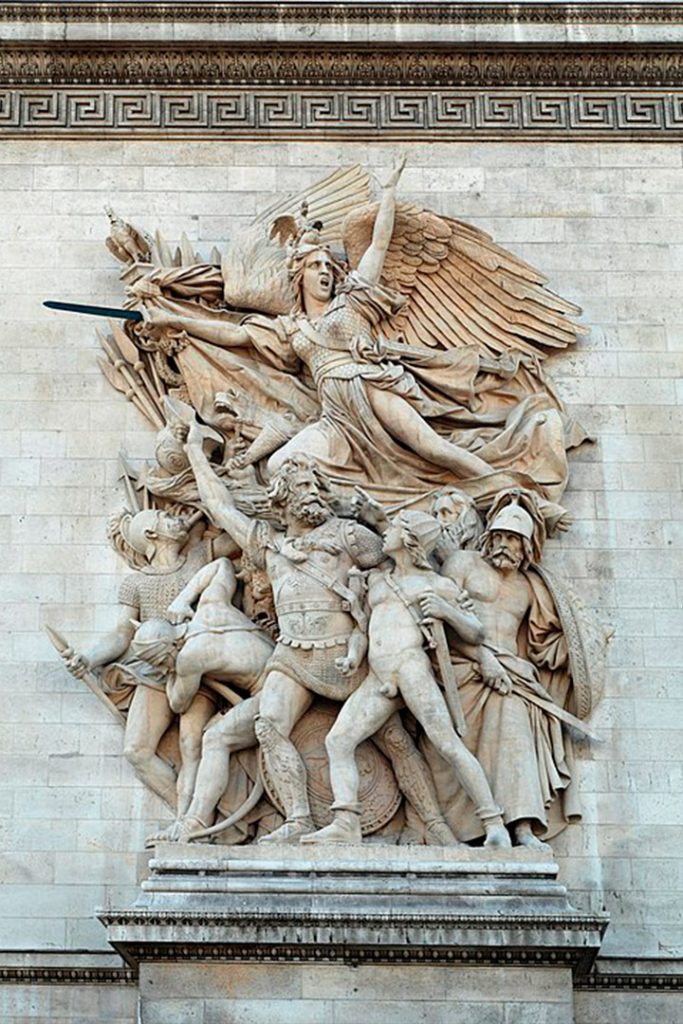
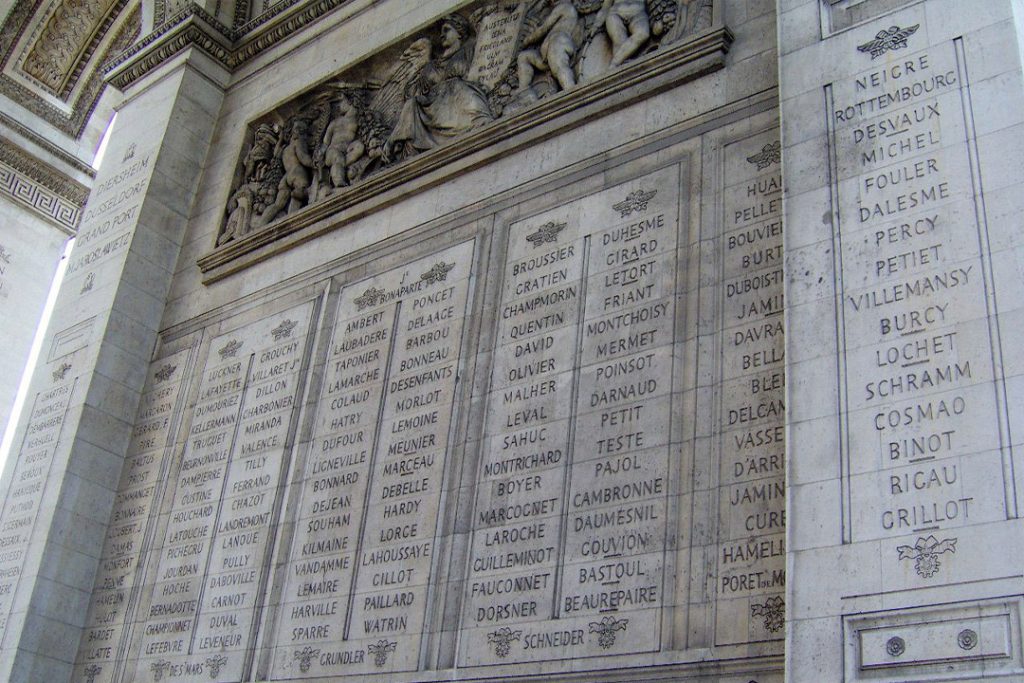
Structure and Materials
The structure of the Arc de Triomphe is built in sturdy limestone, adding to its beauty and durability through time. It stands fifty meters tall, and its largest dome is almost thirty meters high. It is impressive to stand beneath the monument!
Visiting the Arc de Triomphe
The Arc de Triomphe is open every day from 10:00 to 23:00 (except for Tuesdays, when it opens at 11:00) during the months from April to September. It closes down at 22:30 for the rest of the year. To double-check these opening times or one-off closures, make sure to visit the official website!
The admission fee to visit the Arc de Triomphe costs 16 euros, although it can be entered free of charge under certain circumstances, so make sure to check the website. Your ticket gives you access not only to the monument and its interactive museum, but also the terrace and its panoramic view of Paris!


How to reach the Arc de Triomphe
- by public transport: metro lines 1, 2, 6 and RER A (Charles de Gaulle – Étoile station), or
- by bus 22, 30, 31, 52, 73, 92 and Balabus.
Events and Ceremonies
Some scheduled ceremonies are carried out at the Arc de Triomphe, such as the renewal of the eternal flame, which takes place daily at 18:30. It is a civic, silent, admission-free ceremony for everyone wishing to attend it. Furthermore, every 11th of November, the armistice which brought World War I to an end is also commemorated.
Besides this, one-time events and conferences are also held every now and then, so stay tuned to the website!
Advice for your Visit
The best time to visit the Arc de Triomphe is arguably late evening, when the eternal flame is renewed and the Champs Élysées are lit up. If you are an early bird, sunrises beside the monument are also jaw-dropping.
If you want to skip the queues, book your ticket online beforehand!
Discover Paris like never before with our amazing Free Tours!
Explore the City of Light with expert guides and immerse yourself in its history, art, and legends. From its iconic monuments to its most bohemian and mysterious neighborhoods, we have the perfect tour for you.
Frequently Asked Questions (FAQ)
The Arc de Triomphe is fifty meters tall.
The Arc de Triomphe was commissioned by Napoleon to celebrate his victory at the Battle of Austerlitz.
The Arc de Triomphe commemorates the French military victories during the Revolution and the Napoleonic Empire, as well as the World War I Armistice.
The Arc de Triomphe can be found in the former Place de l’Étoile (French for Star Square), nowadays called Place Charles de Gaulle, in one end of the Champs Elysees.
The Arc is decorated with sculptures such as “La Marseillaise”, historical military reliefs, and allegorical figures from mythology.
In 1998, a Mexican tourist put out the eternal flame at the Arc de Triomphe by urinating on it, what an idea!
The Arc de Triomphe can be climbed from its indoors. There is a staircase consisting of 286 steps.
A spellbinding panoramic view of Paris can be seen from atop the Arc de Triomphe.
There are three triumphal arches in Paris, standing in perfect alignment: the Arc du Carrousel, the Arc du Triomphe, and the Grande Arche de la Défense.
The Arc de Triomphe is open every day from 10:00 to 23:00, from April to September (except for Tuesdays, when it opens at 11:00). For the remainder of the year, it closes down at 22:30.
